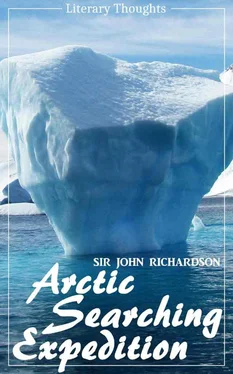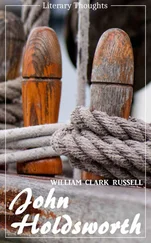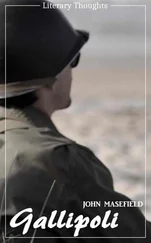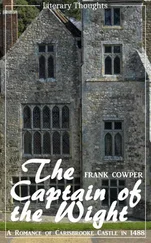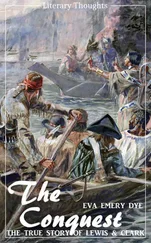"As vessels destined to follow the track of the expedition must necessarily encounter the same difficulties, and be liable to the same severe pressure from the great body of the ice they must pass through in their way to Lancaster Sound, it is desirable that two ships, of not less than 500 tons, be purchased for this service, and fortified and equipped, in every respect as were the 'Erebus' and 'Terror,' for the Antarctic Seas.
"Each ship should, in addition, be supplied with a small vessel or launch of about 20 tons, which she could hoist in, to be fitted with a steam-engine and boiler of ten-horse power, for a purpose to be hereafter noticed.
"The ships should sail at the end of April next, and proceed to Lancaster Sound, with as little delay as possible, carefully searching both shores of that extensive inlet, and of Barrow's Strait, and then progress to the westward.
"Should the period at which they arrive in Barrow's Strait admit of it, Wellington Channel should next be examined, and the coast between Cape Clarence and Cape Walker explored, either in the ships or by boats, as may at the time appear most advisable. As this coast has been generally found encumbered with ice, it is not desirable that both ships should proceed so far along it as to hazard their getting beset there and shut up for the winter; but in the event of finding a convenient harbour near Garnier Bay or Cape Rennell, it would be a good position in which to secure one of the ships for the winter.
"From this position the coast line might be explored, as far as it extends to the westward, by detached parties early in the spring, as well as the western coast of Boothia, a considerable distance to the southward; and at a more advanced period of the season the whole distance to Cape Nicolai might be completed.
"A second party might be sent to the south-west as far as practicable, and a third to the north-west, or in any other direction deemed advisable at the time.
"As soon as the formation of water along the coast between the land and main body of the ice admitted, the small steam-launch should be despatched into Lancaster Sound, to communicate with the whale ships at the usual time of their arrival in those regions, by which means information of the safety or return of Sir John Franklin might be conveyed to the ships before their liberation from their winter quarters, as well as any further instructions the Lords Commissioners might be pleased to send for their future guidance.
"The easternmost vessel having been safely secured in winter quarters, the other ship should proceed alone to the westward, and endeavour to reach Winter Harbour in Melville Island, or some convenient port in Banks's Land, in which to pass the winter.
"From this point, also, parties should be despatched early in spring, before the breaking up of the ice. The first should trace the western coast of Banks's Land, and, proceeding to Cape Bathurst, or some other conspicuous point of the continent, previously agreed on with Sir John Richardson, reach the Hudson's Bay Company's settlement of Fort Good Hope on the Mackenzie, whence they may travel southward by the usual route of the traders to York Factory, and thence to England.
"The second party should explore the eastern shore of Banks's Land, and, making for Cape Krusenstern, communicate with Sir John Richardson's party on its descending the Coppermine River, and either assist him in completing the examination of Wollaston and Victoria Land, or return to England by any route he should direct.
"These two parties would pass over that space in which most probably the ships have become involved (if at all), and would, therefore, have the best chance of communicating to Sir John Franklin information of the measures that have been adopted for his relief, and of directing him to the best point to proceed, if he should consider it necessary to abandon his ships.
"Other parties may be despatched, as might appear desirable to the commander of the expedition, according to circumstances; but the steam-launches should certainly be employed to keep up the communication between the ships, to transmit such information for the guidance of each other as might be necessary for the safety and success of the undertaking.
(Signed) "James C. Ross,
Captain, R. N.
"Athenæum, 2 December, 1847."
By a subsequent arrangement between Sir James Ross and myself, under the sanction of the Admiralty, I undertook to deposit pemican at Fort Good Hope and Point Separation on the Mackenzie, and Capes Bathurst, Parry, Krusenstern, and Hearne, on the sea-coast, for the use of Sir James Ross's detached parties.
The Beering's Straits expedition was composed of the "Herald," Captain Kellet, then employed in surveying the Pacific coasts of America, and the "Plover," Commander Moore. The vessels were expected to arrive in Beering's Straits about the 1st of July, 1848, and were directed to "proceed along the American coast as far as possible, consistent with the certainty of preventing the ships being beset by the ice." A harbour was to be sought for the "Plover" within the Straits, to which that vessel was to be conducted; and two whale-boats were to go on to the eastward in search of the missing voyagers, and to communicate, if possible, with the Mackenzie River party. The "Plover" was fitted out in the Thames in December, 1847; but having been found to leak when she went to sea, was compelled to put into Plymouth for repair, and did not finally leave England until February, 1848. This tardy departure, conjoined with her dull sailing, prevented her from passing Beering's Straits at all in 1848; but she wintered near Cape Tschukotskoi, on the Asiatic coast, just outside of the Straits.
The "Herald" visited Kotzebue Sound, repassed the Straits before the arrival of the "Plover," and returned to winter in South America, with the intention of going northwards again next season.
The main object of the searching party entrusted to my charge was to trace the coast between the Mackenzie and Coppermine Rivers, and the shores of Victoria and Wollaston Lands lying opposite to Cape Krusenstern. In a preceding page I have adduced reasons for believing that there is a passage to the northwards between these lands; and if so, its position makes it the most direct route from the continent to the unknown tract interposed between Cape Walker and Banks's Land, into which Sir John Franklin was expressly ordered to carry his ships. Should he have done so, and his egress by the way he entered be barred by the ice closing in behind him as already suggested, there remained a probability that the annual progression of the ice southwards would eventually carry the ships into Coronation Gulf, or, if abandoned before that event, their crews were to be sought for on their way to the continent.
At the time when Sir John Franklin left England, two other openings from the north into the sea washing the continental shores were supposed to exist. The most westerly of these is between Boothia and Victoria Land, and it was part of Sir James Ross's plan to examine the whole western side of Boothia and North Somerset by one of his steam-barges.
The other supposed entrance was by Regent's Inlet. Dease and Simpson had left only a small space unsurveyed between that inlet and the sea, which was known to afford in good seasons a passage all the way to Beering's Straits; and this might have recommended the route by Regent's Inlet for trial. But, exclusive of its being absolutely prohibited by Sir John Franklin's instructions, Sir Edward Parry and Sir James Ross, on whose opinions Sir John placed deservedly the greatest reliance, were decidedly averse to his attempting a passage in that direction; and it was known that Sir John Franklin had resolved on trying all the other openings before he entered Regent's Inlet, which was to be his last resource. It fortunately happened before any of the searching expeditions were finally organised, that the non-existence of a passage through that inlet was fully ascertained.
Читать дальше
